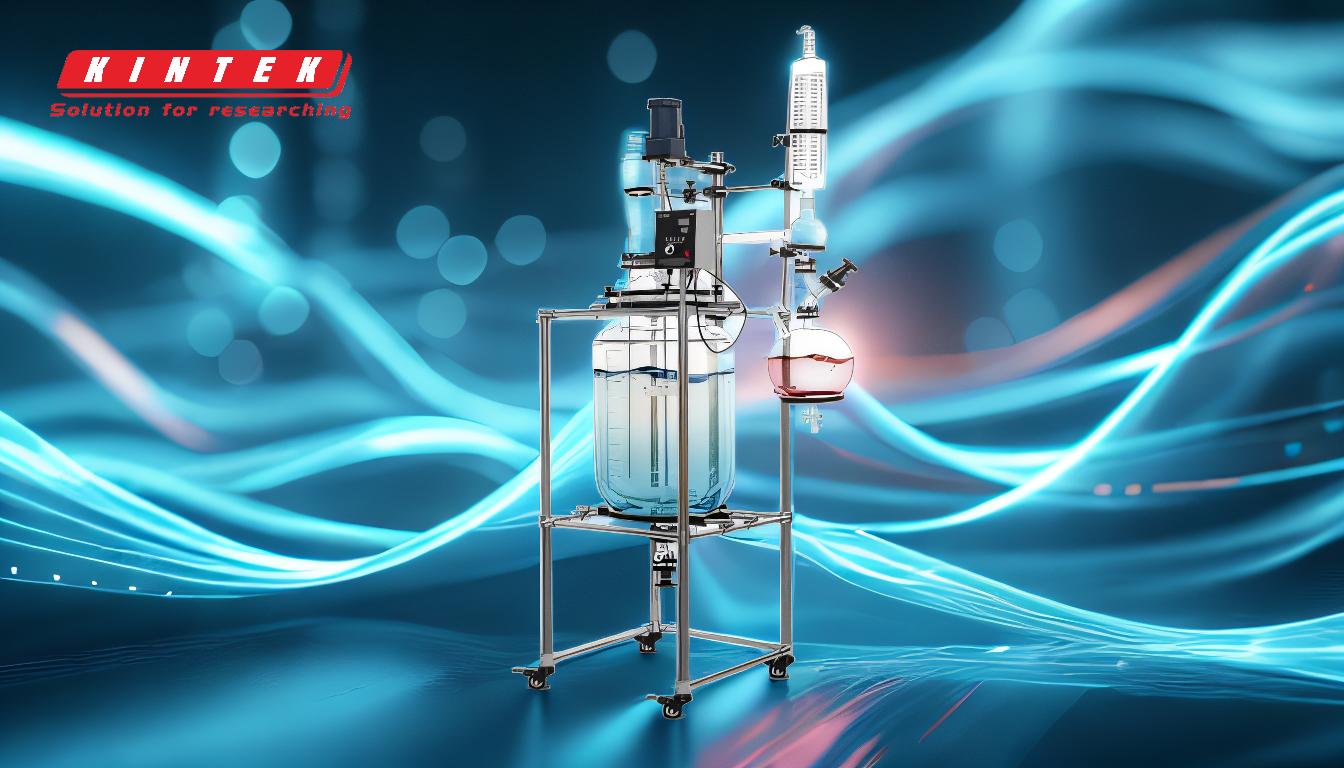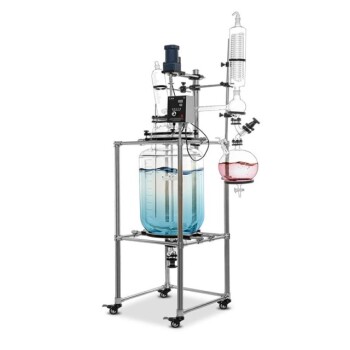The heat transfer coefficient of a jacketed reactor is a critical parameter that determines how efficiently heat is transferred between the reactor contents and the jacket. It is influenced by several factors, including the type of agitation, reactor design, fluid properties, and the presence of baffles. While the provided references do not directly specify the heat transfer coefficient, they highlight factors that indirectly affect it, such as agitation, reactor size, and baffles. The heat transfer coefficient is typically determined experimentally or through empirical correlations, as it depends on the specific setup and operating conditions of the reactor. Below, we explore the key factors and considerations that influence the heat transfer coefficient in a jacketed reactor.
Key Points Explained:

-
Definition of Heat Transfer Coefficient in Jacketed Reactors:
- The heat transfer coefficient (U) is a measure of the overall heat transfer efficiency between the reactor contents and the jacket. It is expressed in units of W/m²·K or BTU/hr·ft²·°F.
- It accounts for the combined resistance to heat transfer from the reactor wall, the fluid inside the reactor, and the fluid in the jacket.
-
Factors Influencing the Heat Transfer Coefficient:
-
Agitation and Mixing:
- The type and speed of agitation significantly impact heat transfer. Effective mixing ensures uniform temperature distribution and reduces thermal gradients, enhancing heat transfer.
- References mention that agitation type and baffles influence mixing capabilities, which in turn affect the heat transfer coefficient.
-
Reactor Design:
- The size and shape of the reactor determine the surface area available for heat transfer. Larger surface areas generally improve heat transfer efficiency.
- The presence of baffles improves mixing and prevents vortex formation, which can enhance heat transfer.
-
Fluid Properties:
- The viscosity, thermal conductivity, and specific heat of the reactor contents and jacket fluid play a crucial role in determining the heat transfer coefficient.
- For example, highly viscous fluids may require more vigorous agitation to achieve efficient heat transfer.
-
Jacket Design:
- The flow rate and temperature of the heating or cooling medium in the jacket affect the heat transfer coefficient.
- The design of the jacket (e.g., spiral, dimpled, or plain) also influences heat transfer efficiency.
-
Agitation and Mixing:
-
Calculating the Heat Transfer Coefficient:
- While the references do not provide specific equations, the heat transfer coefficient is often calculated using empirical correlations or experimental data.
- Common correlations include the Dittus-Boelter equation for turbulent flow or the Sieder-Tate equation for laminar flow, adjusted for reactor-specific conditions.
- The overall heat transfer coefficient (U) can be calculated using the formula: [ \frac{1}{U} = \frac{1}{h_i} + \frac{t_w}{k_w} + \frac{1}{h_o} ] where ( h_i ) and ( h_o ) are the individual heat transfer coefficients for the reactor and jacket fluids, ( t_w ) is the wall thickness, and ( k_w ) is the thermal conductivity of the wall material.
-
Practical Considerations for Equipment Purchasers:
- When selecting a jacketed reactor, consider the heat transfer requirements of your process. This includes the desired temperature range, heating or cooling rate, and the properties of the reactants and products.
- Ensure the reactor design (e.g., agitation type, baffles, jacket configuration) aligns with your heat transfer needs.
- Consult with manufacturers or experts to determine the optimal heat transfer coefficient for your specific application.
-
Experimental Determination:
- In many cases, the heat transfer coefficient is determined experimentally by measuring the temperature difference between the reactor contents and the jacket fluid, along with the heat transfer rate.
- Pilot-scale testing can help validate theoretical calculations and optimize reactor performance.
-
Impact of Photosensitivity and Other Factors:
- While the references mention photosensitivity as a factor requiring adjustments (e.g., amber coating), this does not directly affect the heat transfer coefficient. However, it highlights the importance of considering all process-specific requirements when designing or selecting a reactor.
In summary, the heat transfer coefficient of a jacketed reactor is a complex parameter influenced by multiple factors, including agitation, reactor design, fluid properties, and jacket configuration. While the provided references do not specify exact values, they emphasize the importance of reactor design and mixing in achieving efficient heat transfer. For precise calculations, empirical correlations or experimental data are typically used, and consultation with reactor manufacturers is recommended to ensure optimal performance.
Summary Table:
| Factor | Impact on Heat Transfer Coefficient |
|---|---|
| Agitation and Mixing | Enhances uniform temperature distribution and reduces thermal gradients. |
| Reactor Design | Larger surface areas and baffles improve mixing and heat transfer efficiency. |
| Fluid Properties | Viscosity, thermal conductivity, and specific heat affect heat transfer efficiency. |
| Jacket Design | Flow rate, temperature, and jacket configuration (e.g., spiral, dimpled) influence heat transfer. |
| Experimental Data | Determined through empirical correlations or pilot-scale testing for precise calculations. |
Optimize your jacketed reactor's heat transfer efficiency—contact our experts today for tailored solutions!









